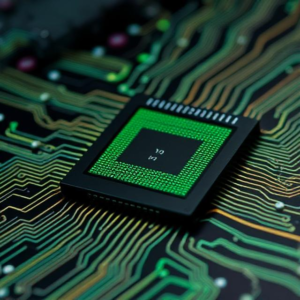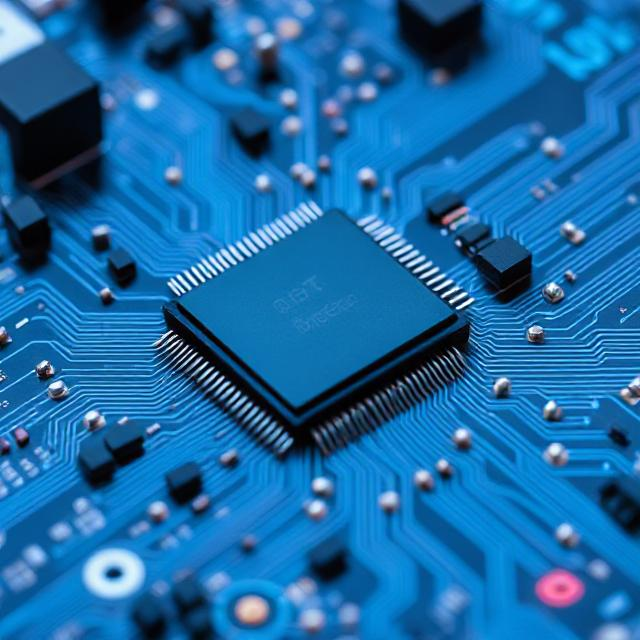What is Dynamic Voltage Scaling (DVS)?
Dynamic Voltage Scaling (DVS) is a technique used in electronic devices to adjust the voltage supplied to a processor or circuit based on the workload or the task that needs to be done. The goal is to save energy and reduce power consumption by lowering the voltage when full power is not needed, and only increase it when necessary.
Think of it like adjusting the speed of a car based on the road conditions. When driving on a smooth, straight road, you don’t need to use the gas pedal much—just like how devices don’t need full power for simple tasks. But when you need to speed up (like climbing a hill), you press the gas pedal more—similarly, DVS increases the voltage when the task requires more processing power.

Why is DVS Important for Power Efficiency?
Electronic devices like smartphones, laptops, and servers consume power constantly, and a big part of that power is used by the processor (like the CPU). Reducing the energy that the processor uses can:
- Save Battery: Devices last longer without charging, especially portable ones like smartphones and laptops.
- Reduce Heat: Lower voltage reduces power consumption, which in turn reduces the heat generated by the device.
- Save Energy: In large systems like data centers or cloud computing servers, this can significantly reduce energy costs and environmental impact.
How Does Dynamic Voltage Scaling Work?
- Performance Requirements:
- The processor or system is always running tasks. Some tasks require high performance (like gaming or video editing), while others require less (like browsing or reading emails).
- Voltage Adjustment:
- With DVS, the system adjusts the voltage and clock speed based on the current workload. When performing low-intensity tasks, the system reduces the voltage and clock speed, saving power. When performing high-intensity tasks, it increases the voltage and clock speed for better performance.
- Power-Performance Trade-Off:
- There’s a balance between performance and power consumption. A lower voltage reduces power usage but can slow down the device, while a higher voltage speeds things up but uses more power. DVS helps find an optimal balance.
Example:
- Imagine you’re watching a simple YouTube video. The processor doesn’t need to be running at full speed, so DVS lowers the voltage to save power.
- But if you’re playing a high-performance game, the processor needs more power to handle the complex graphics, so DVS increases the voltage to keep things running smoothly.
How Does DVS Save Power?
The key to DVS is that the power consumption of a processor isn’t just based on how fast it’s running (clock speed), but also on the voltage at which it’s running. Power is calculated using this formula:
- Voltage has a huge impact on power consumption. For example, if the voltage is cut in half, the power consumption drops by four times (because of the square in the equation).
- So, DVS works by lowering the voltage whenever possible, significantly cutting down the amount of power used by the processor.
Where is DVS Used?
DVS is used in many places, particularly in devices and systems where power efficiency is important.
- Smartphones:
- When you’re just browsing the web or texting, the phone lowers its processor voltage to save battery. But when you’re playing a game or running a demanding app, it increases the voltage for better performance.
- Laptops:
- Similar to smartphones, laptops use DVS to balance performance and battery life. For example, while reading a document, the laptop can lower the voltage to save power, but when editing a video, it raises the voltage for faster processing.
- Servers and Data Centers:
- In large data centers, DVS helps reduce energy costs by adjusting the power used by processors based on the workload. Servers that aren’t doing intensive calculations can use less power, helping cut costs.
- Embedded Systems:
- Devices like smart thermostats or IoT devices often use DVS because they typically don’t require high power for most of their tasks, so lowering the voltage helps extend battery life and save energy.
Benefits of Dynamic Voltage Scaling
- Improved Battery Life:
- By reducing the voltage during low-demand tasks, devices like smartphones and laptops can run for longer periods without needing to be charged.
- Less Heat:
- Lower voltage means less energy is used, which results in less heat being generated. This can help prevent devices from overheating and reduce the need for cooling systems.
- Energy Savings:
- In large systems like data centers, DVS can help cut down on electricity usage, which saves money and is better for the environment.
- Adaptability:
- DVS makes systems more flexible by adjusting power usage based on the needs of the task, making it efficient for both high-performance and low-power tasks.
Challenges of DVS
- Complexity:
- Managing the voltage and performance adjustments requires complex algorithms to decide when and by how much to change the voltage. This can sometimes lead to system overhead or delays.
- Compatibility:
- Not all systems or components are designed to support DVS, so integrating it into older or less flexible hardware can be challenging.
- Speed vs. Efficiency Trade-Off:
- There’s always a trade-off between reducing power consumption and maintaining high performance. If the system reduces the voltage too much, performance may suffer.
Summary
- Dynamic Voltage Scaling (DVS) is a technique used to adjust the voltage and clock speed of a processor based on the workload to save power and increase efficiency.
- It helps by reducing the voltage during low-intensity tasks (saving energy and extending battery life) and increasing the voltage during high-intensity tasks (providing better performance).
- DVS is used in many devices, including smartphones, laptops, servers, and embedded systems, helping balance performance and power efficiency.
By dynamically adjusting the voltage to suit the task at hand, DVS helps make devices smarter, more efficient, and better for both your battery and the environment.











